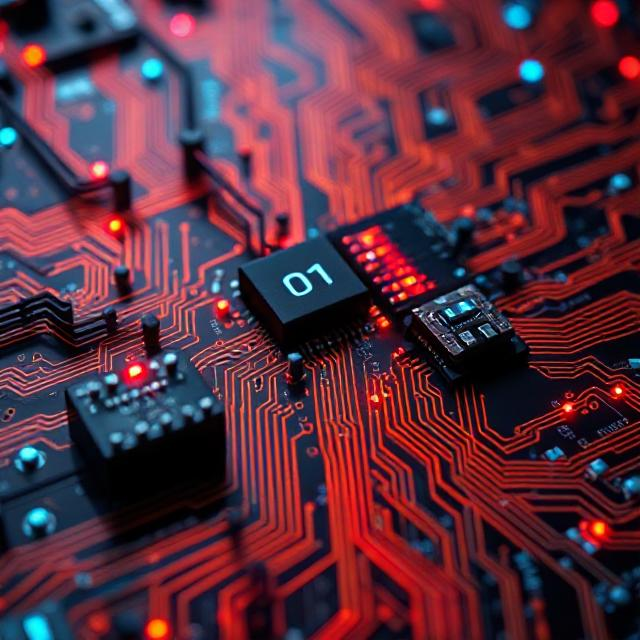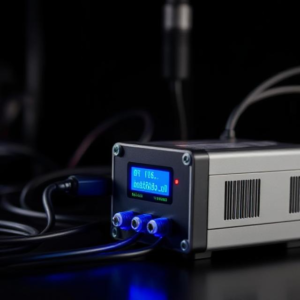In power electronics, converting Alternating Current (AC) from the electrical grid into Direct Current (DC) is a common and essential task. This process is done using devices called rectifiers or AC-DC converters. They are found in almost every electronic device that plugs into the wall, such as chargers, TVs, and computers.

What is an AC-DC Converter (Rectifier)?
An AC-DC converter, also known as a rectifier, changes AC voltage — which periodically reverses direction — into DC voltage — which flows in only one direction.
Why do we need this?
Many electronic circuits, batteries, and devices require a steady DC supply. Since the electrical grid provides AC, we need rectifiers to make AC usable for these devices.
How Does a Rectifier Work?
A rectifier uses semiconductor devices like diodes to allow current to flow only in one direction. This way, the negative half of the AC waveform is flipped or blocked, producing a pulsating DC output.
Because this pulsating DC is not smooth, it is often followed by a filter (like capacitors) to smooth the output into steady DC voltage.
Types of Rectifiers
Rectifiers come in different configurations, mainly classified by how many diodes they use and how they connect to the AC supply.
1. Half-Wave Rectifier
-
Description: Uses a single diode.
-
Operation: The diode conducts only during the positive half-cycle of AC, blocking the negative half.
-
Output: Pulsating DC with gaps (no conduction during negative half-cycle).
-
Advantages: Simple and low-cost.
-
Disadvantages: Inefficient, with low average output voltage and poor transformer utilization.
-
Typical Use: Low-power applications.
2. Full-Wave Rectifier
There are two types of full-wave rectifiers:
a. Center-Tapped Full-Wave Rectifier
-
Description: Uses two diodes and a center-tapped transformer.
-
Operation: Each diode conducts during alternate half-cycles.
-
Output: Pulsating DC with double the frequency of input AC.
-
Advantages: More efficient than half-wave, better transformer utilization.
-
Disadvantages: Requires a center-tapped transformer, which can be bulky and costly.
b. Bridge Rectifier
-
Description: Uses four diodes arranged in a bridge.
-
Operation: During both positive and negative half-cycles, current is directed through the load in the same direction.
-
Output: Pulsating DC with no gaps.
-
Advantages: Does not require a center-tapped transformer, efficient, widely used.
-
Disadvantages: Slightly higher voltage drop due to using two diodes in series during conduction.
Comparing Half-Wave and Full-Wave Rectifiers
| Feature | Half-Wave Rectifier | Full-Wave Rectifier |
|---|---|---|
| Number of Diodes | 1 | 2 (center-tap) or 4 (bridge) |
| Output Frequency | Same as AC supply | Twice the AC supply frequency |
| Efficiency | Low | Higher |
| Transformer Required | No | Yes (center-tap) for center-tapped type; no for bridge |
| Output Voltage Ripple | High | Lower |
Additional Concepts
Filtering
Since the output of a rectifier is pulsating DC, smoothing components like capacitors or inductors are used to reduce voltage ripple, producing a nearly constant DC voltage.
Controlled Rectifiers
In some applications, we want to control the output voltage. This is done using thyristors or silicon-controlled rectifiers (SCRs) instead of diodes, allowing us to delay the conduction angle and vary the DC output voltage.
Applications of Rectifiers
-
Power supplies for electronic devices
-
Battery charging
-
DC motor drives
-
Welding machines
-
HVDC transmission systems
Conclusion
AC-DC converters, or rectifiers, are fundamental building blocks in power electronics. Understanding the types of rectifiers—half-wave, full-wave (center-tapped), and bridge—helps us choose the right design for efficiency, cost, and output quality.
Whether powering your phone or running industrial machines, rectifiers ensure that AC from the grid becomes usable DC power.











